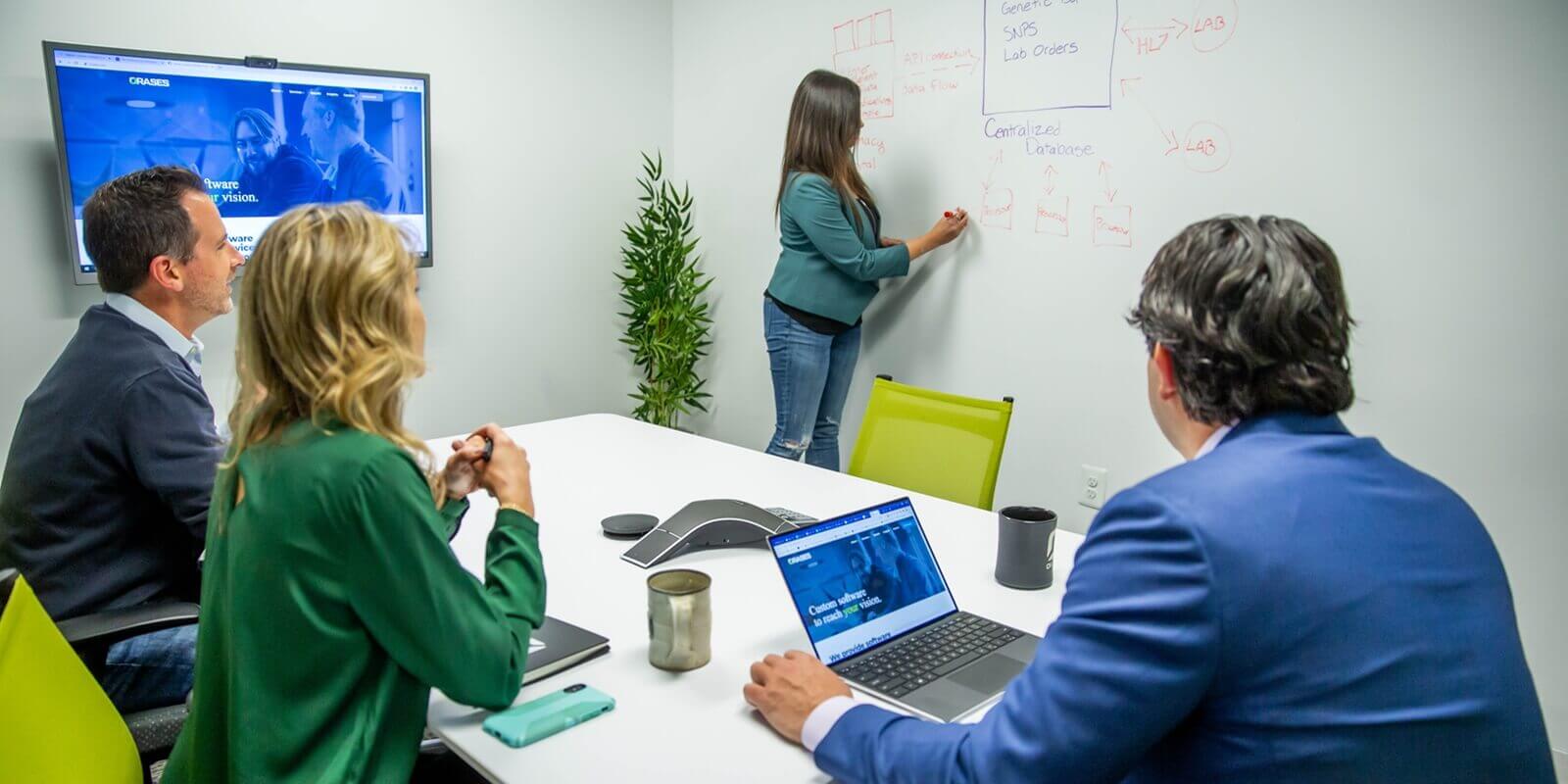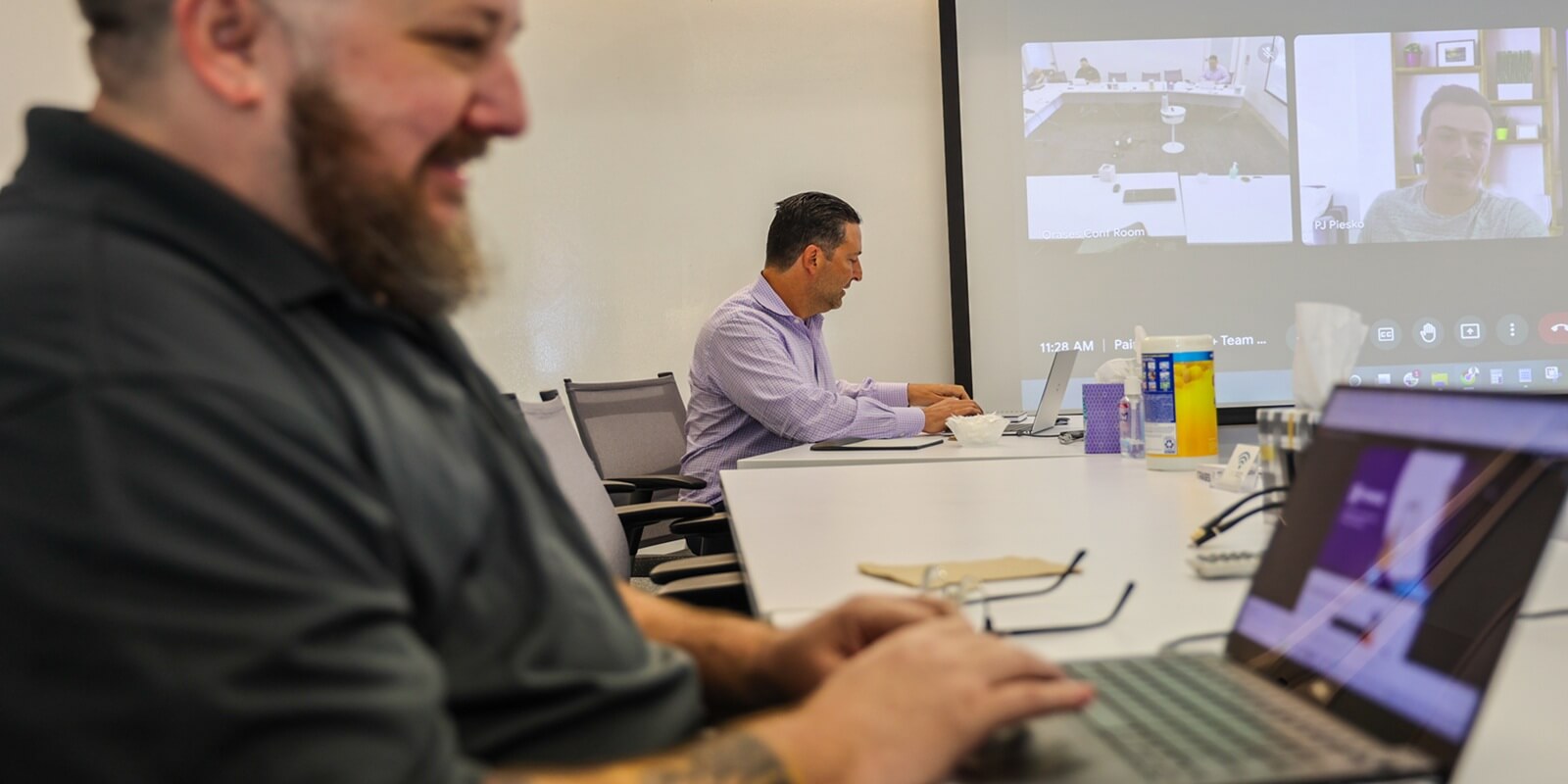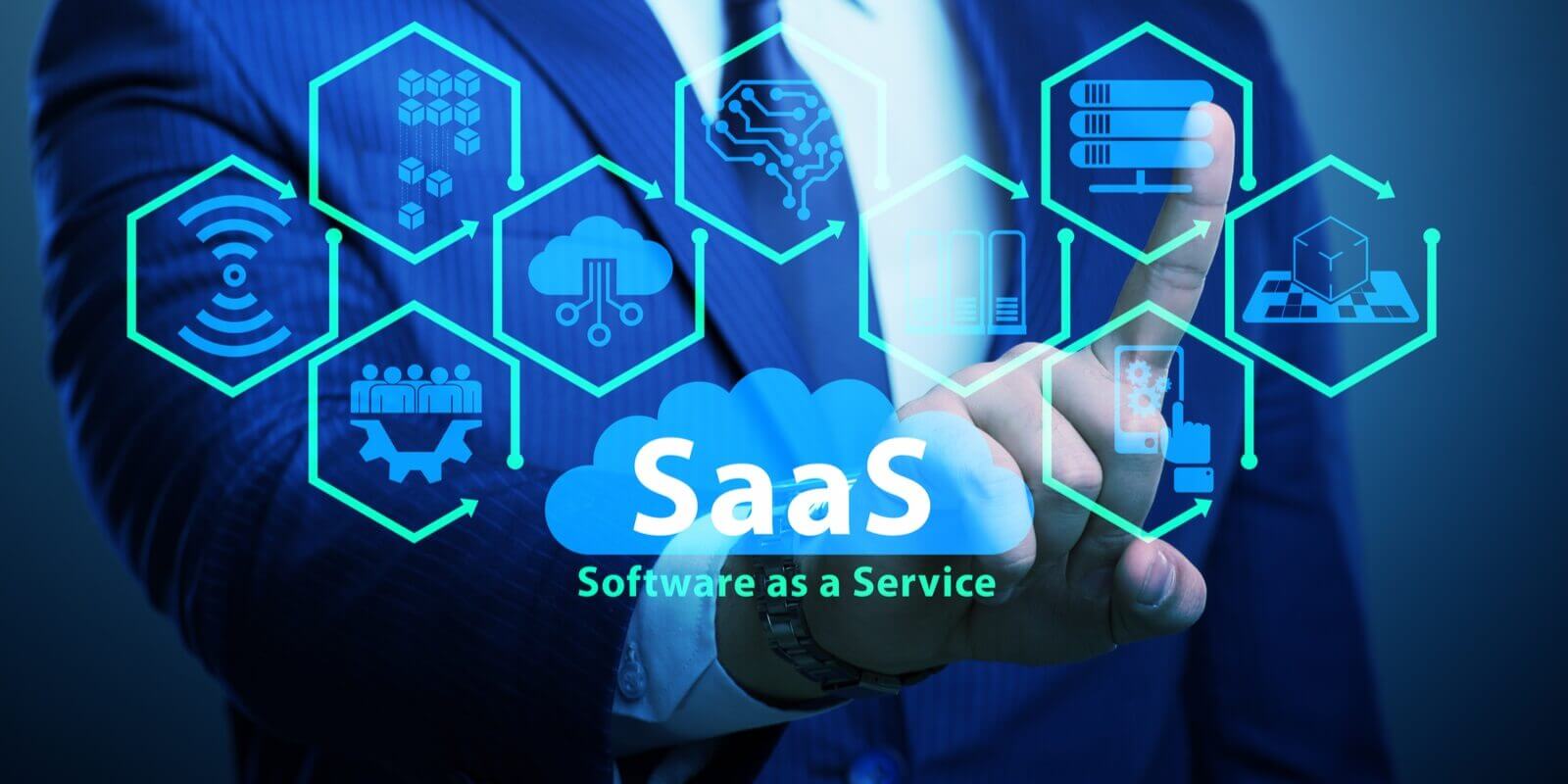Replatforming Applications: A Complete Guide
Explore the benefits of application replatforming, designed to help you modernize your systems and stay competitive. Discover strategic insights and practical steps to enhance efficiency, security, and scalability in your organization.
Problems with your current platform can dramatically slow down your operations and prevent your organization from adapting to new market demands, ultimately limiting your future vision and potential for growth. However, there is a possible solution available for organizations of all sizes that may help—replatforming.
With extensive experience in application replatforming, we’ve helped numerous organizations over the years successfully transition to modern platforms that better align with their business goals. Through these projects, we’ve gained valuable insights into the most effective strategies and common pitfalls to avoid, positioning us as a trusted partner in your path to modernization.
To help you, we’ve carefully designed the following complete guide to inform and educate you on the overall process, primary benefits, and notable challenges that come with replatforming an application.
01
Chapter 01
What is Application Replatforming?
Replatforming an application involves shifting it from one platform to another while making minimal changes. It typically aims to improve performance, scalability, and security without completely overhauling the application.
Replatforming is a middle-ground approach in the spectrum of application modernization strategies that offers a balance between retaining existing functionality and gaining the benefits of a modern platform.
Replatforming vs. Rehosting vs. Refactoring
Replatforming, rehosting, and refactoring are all distinct approaches to application modernization, each with its own level of complexity and impact:
- Replatforming involves moving an application to a new platform with some minor adjustments, such as changing the underlying database or operating system. The core functionality remains largely unchanged, but the application benefits from the improved capabilities of the new environment.
- Rehosting is the simplest form of modernization, often referred to as “lift and shift.” It entails migrating an application to a new infrastructure, such as from an on-premises server to the cloud, without altering the code. While this approach is quick and cost-effective, it might not take complete advantage of the new platform.
- To optimize the application for the new platform, refactoring requires more extensive code modifications. This approach addresses technical debt, improves performance, and adds new features, making it more suited for long-term modernization projects that aim for significant enhancements in functionality and efficiency.

Learn why replatforming has become an important strategy for organizations aiming to scale, boost efficiency, and innovation.
02
Chapter 02
Why Perform Application Replatforming?
Replatforming plays a significant role in helping organizations stay competitive and improve operational efficiency.
With technology continuing to advance at a breakneck pace, applications must keep up to simultaneously handle increasing workloads, integrate modern security features, and reduce costs.
Moving to a new platform allows your business to enhance scalability, strengthen security, and achieve greater cost-effectiveness, all of which are essential for responding effectively to market changes and meeting customer expectations.
Common Reasons for Replatforming
Your current platform doesn’t serve its primary purpose anymore
Running on outdated platforms can severely limit innovation along with your ability to adapt to any changes in your industry.
As technology progresses, older systems often lack the flexibility and features needed to support modern business operations. The resulting stagnation can lead to missed opportunities and slow responses to industry shifts, placing your organization at a disadvantage compared to more agile competitors.
It’s not efficient enough to perform the current work (You’re losing money or time)
Inefficient systems drain resources and reduce productivity. When your platform struggles to handle current workloads or integrate with newer tools, it leads to delays, errors, and higher operational costs.
Over time, these inefficiencies can erode profit margins and negatively impact customer satisfaction, making it harder for your business to thrive.

Modernizing legacy systems helps modern businesses reduce unnecessary maintenance costs and maintain smooth operations.
It’s holding the company back from growth and future vision
Legacy systems can often act as barriers to growth by preventing your company from scaling operations or adopting new business models. These outdated technologies can misalign with your long-term vision, making it difficult to achieve strategic goals.
03
Chapter 03
Common Replatforming Projects
As we’ve discussed so far, relying on outdated technology can limit your organization’s ability to grow and compete.
However, replatforming projects offer a path to modernizing essential systems, enhancing performance, and improving security.
Examples of Typical Replatforming Projects
Many organizations undertake replatforming projects to modernize outdated systems and improve their overall efficiency. A few common examples include:
Moving away from Excel
Excel, while widely used, often becomes inadequate as data management needs grow more complex. Migrating to a more scalable and secure platform allows for better data handling, collaboration, and integration with other business systems.

Moving away from Access
Microsoft Access, although useful for smaller databases, struggles to meet the demands of larger, more dynamic business environments. Transitioning to a modern database system can provide enhanced performance, security, and scalability.
Moving away from other old database systems
Legacy databases often fall behind in delivering the functionality and flexibility required in today’s dynamic business environment. Replatforming to a modern database system can improve data processing speed, integration capabilities, and overall reliability.
Legacy Frameworks
- AS400 (iSeries mainframe computer): The AS400, a workhorse in many organizations for decades, can no longer keep up with the demands of modern applications. Replatforming from this legacy system to a cloud-based or more contemporary environment can offer significant performance and scalability benefits.
- Cold Fusion: Cold Fusion, once popular for web development, is now considered outdated and can pose security risks. Moving to a modern web development framework improves security while making sure your application is compatible with current technologies.
- ASP:Active Server Pages (ASP) is another outdated technology that many businesses still rely on. Replatforming to a newer, more versatile web framework can improve application performance, security, and the ability to integrate with modern tools.

Discover the power of modern technology with Orases, your expert in application replatforming. Elevate your business’s efficiency and agility by contacting Orases today to transform your legacy applications into cutting-edge solutions.
End of Support / End of Life
Software reaching its end of support or end of life poses significant risks, including security vulnerabilities and a lack of vendor support. Replatforming these aging and outdated systems is essential to maintaining operational continuity and securing the organization’s data and processes.
Is Your Technology on This List?
Take a close look at your current technology stack to assess how it currently holds up. If any of the platforms or frameworks you’re using are mentioned here, it may be time to consider replatforming.
04
Chapter 04
How Does Replatforming Work?
Successfully replatforming your application requires a fair degree of careful planning and execution, balancing both business objectives and technical needs.
Steps for Businesses (Discovery)
The replatforming process begins with a thorough discovery phase, where the primary goal is to understand the purpose of the current platform and assess whether it aligns with your business objectives.
During this phase, you must take the time to carefully evaluate if the existing platform is meeting your organization’s needs or if it’s time to consider alternative solutions.
If the platform no longer supports your goals, it may be necessary to explore off-the-shelf solutions or custom development options. Proper planning at this stage lays the foundation for a successful replatforming project, which looks like the following:
Technical Step-by-Step Overview
- Assess the Current System Architecture: Begin by thoroughly analyzing the existing application architecture to understand its components, dependencies, and overall structure.
- Select the New Platform: Try to opt for a platform that aligns with your business’s objectives and adequately satisfies your technical requirements.
- Plan the Migration Strategy: Create a detailed migration plan that specifies the sequence of steps you have to follow.
- Set Up the New Environment: Configure the new platform environment according to the requirements of the application.
- Transfer Application Components: Migrate the application’s codebase, databases, and other necessary components to the new platform.
- Adjust for Compatibility: Make necessary adjustments to the application to confirm it functions correctly on the new platform.
- Test the Migrated App: Conduct thorough testing of the application in the new environment to find and fix any problems.
- Deploy to Production: After you’ve completed testing and taken care of any problems, you then deploy the application to the production environment.
- Post-Migration Review and Optimization: Once the application is deployed, perform a review of the migration process to discover any areas for improvement.
Data Migration Strategies
Data migration is one of the most important aspects of the broader replatforming process, which involves carefully transferring data from the old platform to the new one while maintaining its integrity and security.
Application Dependencies and Integration
Replatforming also requires a thorough review of application dependencies and integrations with other systems. Properly identifying and managing these dependencies can help make sure that your application continues to function correctly on the new platform.

Orases worked with community products to improve their system architecture, modernize their applications and integrate existing apps.
05
Chapter 05
How Much Does Application Replatforming Cost?
Cost Factors and Budgeting
Several different factors can affect the expenses of replatforming. The complexity of the platform is a major driver; systems with many components and dependencies typically require more time and resources.
Data migration needs also influence costs—large volumes or complex structures can increase the project’s expense and duration. Integration challenges, such as making sure that the replatformed application works smoothly with other systems, can further add to the overall cost.
Cost-Benefit Analysis
When evaluating replatforming, consider the upfront costs alongside the long-term benefits. The initial investment may be substantial, but the potential for improved efficiency, lower operational costs, and enhanced scalability can provide significant returns.
06
Chapter 06
Benefits of Replatforming
As discussed earlier, several benefits come with replatforming that can help streamline the operations of your business.
Performance Improvement
Replatforming often results in faster processing times and reduced downtime, which directly enhances the user experience.
For instance, transitioning from a legacy system to a cloud-based platform can reduce latency and improve application responsiveness.
Cost Efficiency
Modern platforms often offer more efficient resource management, such as dynamic scaling, which allows you to pay only for the resources you actually use. The reduced need for frequent maintenance and updates on a modern platform also further cuts down on costs, freeing up your budget for other strategic initiatives.

Discover how mobile SaaS applications work and how your organization can develop one to significantly increase its clientele and profitability.
Enhanced Security
Modern platforms come with advanced security features that older systems often lack. These platforms typically include built-in compliance tools and updated security protocols that protect against emerging threats.
For example, many cloud-based platforms offer integrated identity and access management (IAM) systems that simplify user authentication and protect sensitive data.
Scalability
Replatforming provides the flexibility needed to scale your business effectively. Modern platforms are designed to handle growth, whether that means accommodating a higher volume of users, processing more data, or integrating additional services.
For instance, companies like Netflix have successfully replatformed to achieve greater scalability, allowing them to support millions of users simultaneously without compromising performance.
07
Chapter 07
Considerations and Challenges of Replatforming
Replatforming can offer significant advantages, but it also comes with its share of respective challenges to overcome.
Potential Risks and How to Mitigate Them
Replatforming presents several distinct risks that organizations must remain aware of and work to mitigate. If your organization fails to take the right precautions you may run into some data loss during migration. To mitigate this, thorough data backups should be made before beginning.
Downtime is another concern since it can disrupt your business operations; that’s why planning the migration during off-peak hours and using phased rollouts can help minimize this impact.
Alongside these problems, compatibility issues may arise when integrating the replatformed application with existing systems. To address this, you must conduct compatibility testing early in the process and make any necessary adjustments before full deployment.
Organizational Resistance
Many organizations tend to encounter resistance to change during the replatforming process. Employees may fear job security, learning new systems, or changes in their workflows to transition successfully, you must address these issues.
Easing the transition and reducing resistance can be achieved through open communication, involving employees, and providing thorough training.
Ensuring Data Integrity and Security
You want to maintain the integrity of your data and security during the entire replatforming process. That’s why employing strong data management practices, such as encryption and regular backups, are essential to protect sensitive information throughout the process.
Utilizing encryption helps guarantee that data remains secure during transfer, while backups provide a safety net in case of any issues during migration.
08
Chapter 08
Application Replatforming Best Practices
To help make your replatforming process successful, you want to carefully follow some key best practices throughout every stage of the process.
Planning the Replatforming Process
Successful replatforming starts with clear objectives and a well-structured plan. Begin by clearly defining your goals, improving performance, enhancing security, or achieving better scalability.
Once you’ve set clear objectives, take the time to create a detailed project roadmap that outlines each phase of the process, from initial assessment to final deployment. Your roadmap should include clearly defined timelines, resource allocation, and main milestones so that the project stays on track.
Execution Best Practices
During the execution phase, you need to have careful preparation in place and engage in ongoing monitoring.
- Start with pre-migration testing to identify and resolve potential issues before the actual migration begins. This step helps prevent unexpected problems and minimizes disruptions.
- As the migration advances, keep a vigilant watch on the process to verify that everything is moving forward according to plan.
- Managing the migration effectively involves coordinating between teams, addressing any issues that arise in real time, and keeping stakeholders informed.
- You also want to work to reduce potential downtime, which you can achieve through phased rollouts, where the migration is conducted in stages, minimizing the potential impact on your business operations.

Web application development is the process of developing, designing, testing and deploying a web-based application.
Post-Replatforming Activities
After the migration, it’s important to focus on post-replatforming tasks to maintain long-term success.
- Conduct post-migration testing to confirm that the application is functioning as expected in its new environment. This testing should cover all aspects, including performance, security, and user experience.
- Providing training and support to your team is also important, helping them adapt to the new platform and utilize its features effectively.
- Ongoing monitoring and further refinement are essential when it comes to maintaining the platform’s performance in the long term.
- Regular updates and performance reviews will help keep the system running smoothly and aligned with evolving business needs.
09
Chapter 09
Real-Life Examples of Application Replatforming
Application replatforming plays an important role in modernizing legacy systems, streamlining efficiency, and unlocking new capabilities for businesses.
The following case studies directly demonstrate how our team at Orases successfully replatformed systems for various organizations, addressing their distinctive challenges and delivering impactful results.
Next Day Dumpsters: Streamlining Operations with Custom CRM Software
Next Day Dumpsters faced significant inefficiencies due to their reliance on multiple off-the-shelf software systems that couldn’t actually communicate with each other.

The manual order intake process further complicated operations. We addressed these challenges by developing a custom CRM solution that consolidated pricing, quoting, order tracking, and delivery mapping into a single platform.
This replatforming project improved communication and efficiency across the organization while laying the groundwork for potential SaaS offerings.
American Kidney Fund: Modernizing Grant Management with GMS 2.0
The American Kidney Fund (AKF) was operating with an outdated Grant Management System that was slow, unreliable, and unable to meet the needs of its 94,000 annual patients.
Our team replatformed AKF’s GMS to a cloud-based, modular architecture, significantly enhancing its speed and reliability.

The new system automates complex processes, reduces errors, and allows AKF to generate customized reports, thereby improving efficiency and data accuracy.
AAMI: Enhancing User Experience with a New HTM Levels Website
The American Association for the Advancement of Medical Instrumentation (AAMI) required a digital transformation for their Healthcare Technology Management (HTM) Levels Guide. The challenge was to develop an interactive, web-based assessment tool that could deliver a quantifiable score for HTM Departments.

The American Association for the Advancement of Medical Instrumentation (AAMI) required a digital transformation for their Healthcare Technology Management (HTM) Levels Guide. The challenge was to develop an interactive, web-based assessment tool that could deliver a quantifiable score for HTM Departments.
We replatformed the guide into a modern, responsive web application that improved user engagement and efficiency. The result was a significant increase in completed assessments, providing AAMI with a powerful tool to help their community improve patient care through better health technology management.
10
Chapter 10
Checklist: Is Replatforming Right for You?
To determine whether or not replatforming is the right fit for your application, there are a few main questions you should check off your list first:
| Your application struggles with performance issues or frequent downtime. | |
| Maintenance costs are climbing due to aging infrastructure. | |
| Scalability limitations prevent you from meeting growing business demands. | |
| Your current platform lacks compatibility with modern tools or integrations. | |
| User complaints are increasing, and the application isn’t keeping up with their needs. |
Take the time to assess whether your existing infrastructure is holding back your business by examining how well it supports your goals. If outdated technology is slowing innovation or causing inefficiencies, replatforming could be the solution.
Make sure that you involve all relevant parties and key stakeholders in the evaluation process so that the final decision to replatform properly aligns with your current business goals and objectives.
11
Chapter 11
Recommended First Steps
1. Initial Planning and Assessment
Start your replatforming journey by conducting a thorough needs assessment to understand where your application is currently at and where you want to go with it.
2. Setting Realistic Goals
Make sure to set clear, realistic goals that align with your business needs and available resources.
Make sure your objectives—whether they involve making your performance better, cutting core costs, or improving scalability—are clear and able to be easily tracked.
Make sure that you involve all relevant parties and key stakeholders in the evaluation process so that the final decision to replatform properly aligns with your current business goals and objectives.
3. Engaging Key Stakeholders
You must involve all stakeholders from the beginning so that their requirements and expectations are taken into account.
You should carefully communicate the benefits of replatforming clearly and provide regular updates to maintain alignment and buy-in throughout the process.
12
Chapter 12
Conclusion
Replatforming offers a strategic way to modernize your applications, improve performance, and prepare your business for future growth.
With careful planning, a thorough needs assessment, realistic goal-setting, and the involvement of key stakeholders, you can complete the replatforming process successfully and realize significant business benefits.
As you consider replatforming, take the time to evaluate your needs, involve your team, and approach the process with a clear and effective plan.
To continue your learning and expand your knowledge base even further, you can consider exploring additional guides and resources on application modernization. Alternatively, you can consult with experts, like the team at Orases, who can guide you through the complexities of replatforming.

13
Chapter 13
Glossary of Terms
- Platform: A framework or environment that hosts and supports applications and services.
- Cloud-Based Platform: A platform that is hosted in the cloud (i.e., on the internet) rather than on-premises.
- End of Support (EoS): The point at which a software vendor ceases to provide updates, patches, or technical support for a product.
- End of Life (EoL): A stage in the software lifecycle when a product is no longer sold or supported by the vendor.
- Cost-Benefit Analysis: Evaluating the advantages and drawbacks of a decision like replatforming to assess if the benefits justify the investment.
- Phased Rollout: A strategy for implementing changes, such as replatforming, in stages rather than all at once.
- Identity and Access Management (IAM): A combination of policies and technologies that restrict access to resources for the proper parties.
- Post-Migration Review: A review conducted post-replatforming to assess its success and determine any necessary improvements.
14
Chapter 14
Useful Resources and Tools
There are several important tools and resources that can help organizations successfully undertake replatforming projects:
- Astera: Astera offers a suite of tools that facilitate no-code data migration and API management, making it easier to modernize legacy applications and integrate them with new platforms without extensive manual coding.
- AWS Serverless Application Model (SAM): AWS SAM simplifies infrastructure management and automates permission provisioning, making it a valuable resource for organizations looking to replatform applications to a serverless architecture within the AWS ecosystem.
- Red Hat OpenShift: This platform provides container-based application replatforming, offering scalability, automation, and efficient workload management. OpenShift is particularly beneficial for organizations moving to a cloud-native environment, as it supports a wide range of enterprise applications.
15
Chapter 15
FAQs
How do I know if replatforming is the best decision?
Signs that your application may need replatforming include performance issues, increasing maintenance costs, scalability limitations, security vulnerabilities, or difficulty integrating with modern tools and technologies.
If your current platform is no longer supporting your business needs or is holding back your growth, replatforming could be a beneficial move.
What are the main risks that come with replatforming, and how can my organization mitigate them?
Some of the main risks organizations may face include a loss of data, an interruption in uptime, and problems with compatibility.
To mitigate these risks, you must properly plan before deployment and have plenty of thorough testing for the application itself.
How long does replatforming generally take?
While more basic projects may only take a few weeks, you may need to block out several months for a more complex application. You need to properly plan and allocate your resources effectively to set realistic timelines and prevent delays.
Schedule 30-Minute Consultation With Orases Today
"*" indicates required fields























